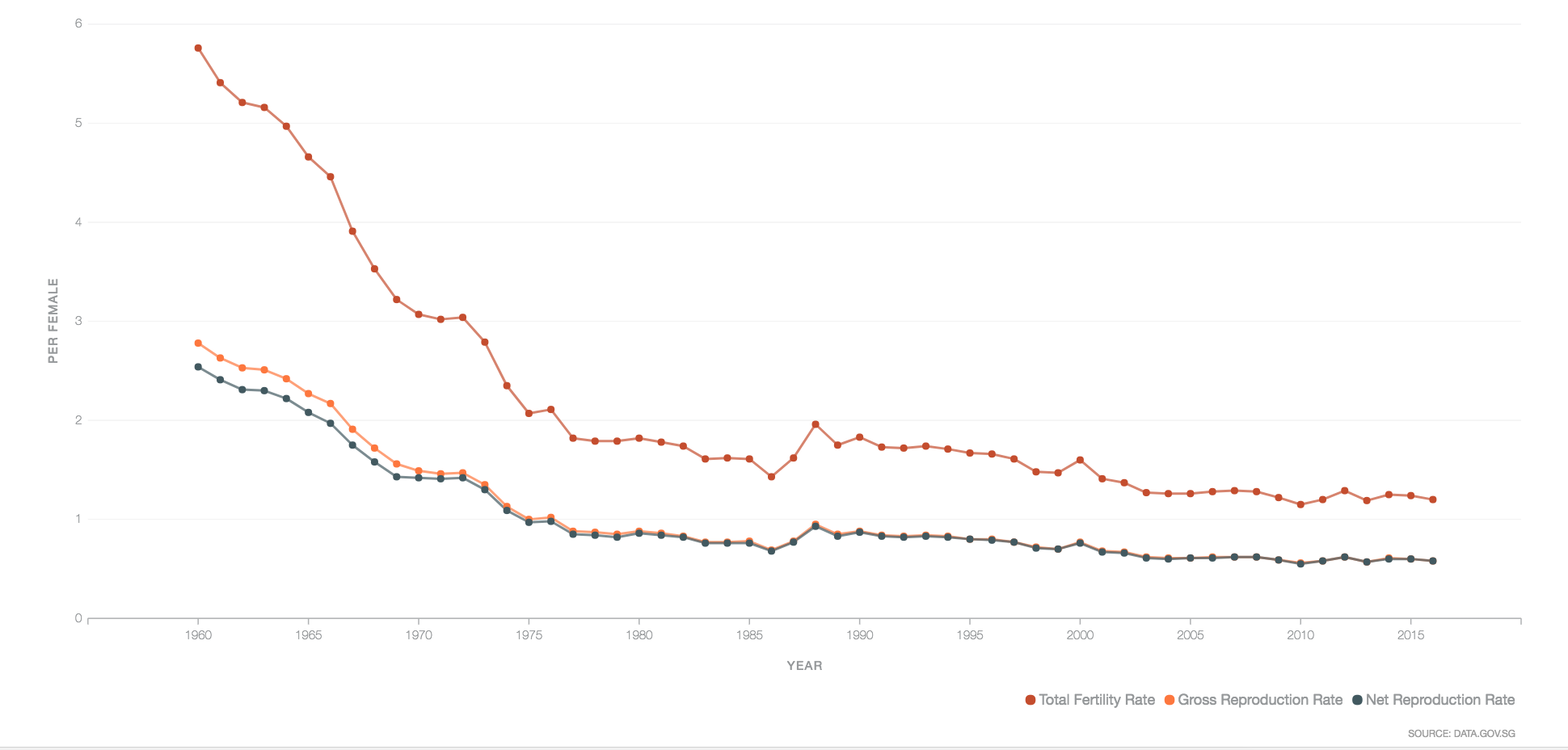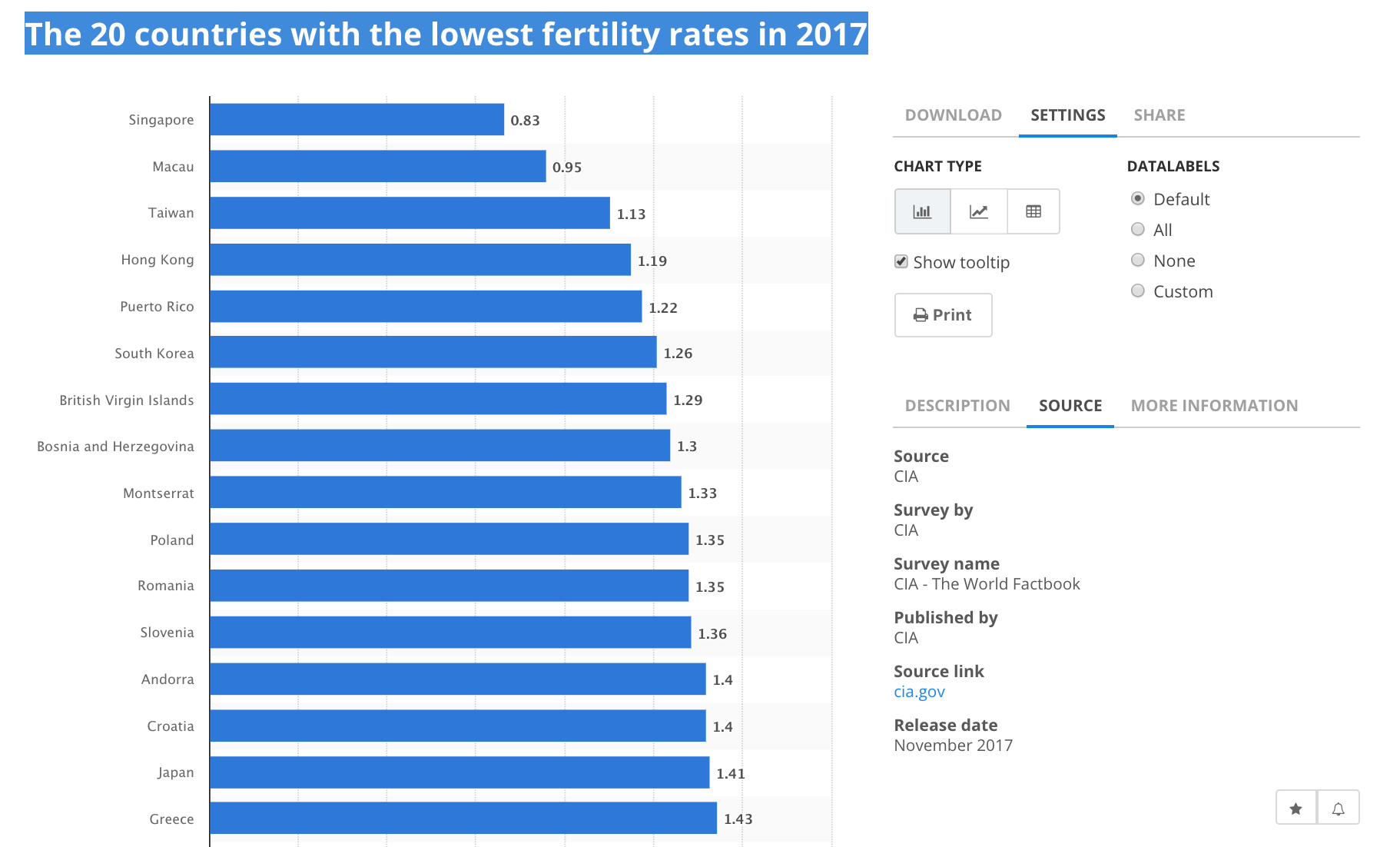Singapore's Total Fertility Rate (TFR) has been steadily declining.
 Screnshot from Data.gov.sg
Screnshot from Data.gov.sg
On March 1, 2018, Minister in the Prime Minister's Office Josephine Teo stated that Singapore’s TFR dropped to 1.16 in 2017.
This is the lowest figure since 1.15 in 2010 and the second-lowest ever recorded by the Department of Statistics Singapore.
A different statistic recorded
According to Statista, a provider of market and consumer data headquartered in Hamburg, the number for our fertility rate was revealed to be 0.83.
In a graph labelled "The 20 countries with the lowest fertility rates in 2017," Singapore came out top with the lowest fertility rate.
Singapore's fertility rate is lower than Taiwan, Hong Kong and South Korea.
 Screenshot from Statista.
Screenshot from Statista.
Statistics from The World Factbook
Statista's information is derived from data published by The World Factbook.
The World Factbook is an online archive of the "history, people, government, economy, energy, geography, communications, transportation, military, and transnational issues for 267 world entities" produced by The Central Intelligence Agency (CIA).
It includes a comprehensive list of basic statistics on Singapore. These include our median age, TFR, net migration rate, and GDP.
[related_story]
Their website's FAQ acknowledges that their statistics may differ from other sources due to factors such as data availability, assessment, and methods and protocols.
This is what Factbook states regarding these different factors:
Data availability
"Researchers may obtain specific country data at different times. Estimates or projections developed before the results of a census have been released will not be as accurate as those that take into account new census results."
Assessment
"Researchers can differ in their assessment of data quality and in their estimates based on the available country data. They often need to adjust their estimates due to such factors as undercounting in a census or underregistration of births or deaths."
Methodology and protocol
"Differences in methods and protocols can shape the way estimates and projections are made of fertility, mortality, and international migration, and how these data are integrated with the population data. For example, the US Census Bureau uses a model that projects the population ahead by single years of age, a single year at a time (population statistics used in the Factbook are based on this model), whereas the United Nations model projects five-year age groups forward, five years at a time."
How does this compare to Singstat?
Both the Singstat's and Factbook's statistics are for 2017, however, the exact period is not known.
For Singstat, TFR is derived by aggregating the age-specific fertility rates of females in each of the reproductive ages for a specific year. The total resident population comprising Singapore citizens and Permanent Residents (PRs) is considered.
On their website, Factbook did not reveal any additional information regarding their data source and exact methodology. Mothership.sg has reached out to them regarding these details.
It is likely that the discrepancy between the statistics can be attributed to the broad factors suggested by Factbook.
Top photo from Getty Images.
?Here’s how S’pore town was planned some 200 years ago
?Today is the last day to get free ice-cream with this app at Orchard
?️ Here’s how you can be cost-efficient when you shop online
If you like what you read, follow us on Facebook, Instagram, Twitter and Telegram to get the latest updates.
